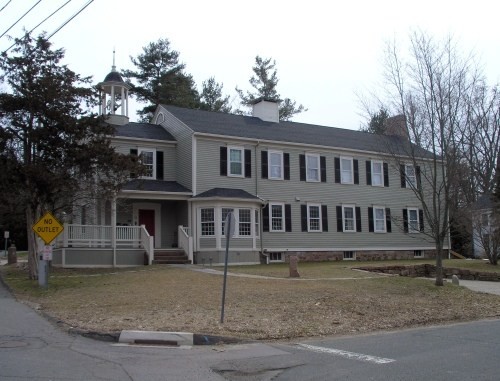Union Hall
Introduction
Text-to-speech Audio
Images
Union Hall, also known as Farmington Academy, now exists as a private residence.

Backstory and Context
Text-to-speech Audio
The Farmington Academy was formed in 1816, after local parents and church members saw a need for a grammar school in the town of Farmington. The Academy offered math, grammar, geography, Latin, and Greek courses and taught both boys and girls. Headmaster Simeon Hart, a Yale graduate, is credited with much of the school's popularity and success. By the late 1820s, school enrollment had nearly doubled that of its inaugural year, and students from out of state had begun boarding with local families to attend. Hart left the school in 1835 in order to start a boys' boarding school, and thought the Academy remained open for another 15 years, its success and enrollment numbers faltered. The school closed in 1850.
During the abolitionist movement, Union Hall was used by both abolitionists and anti-abolitionists to hold their meetings. For this reason, Union Hall is included on the Farmington Freedom Trail.
Sources
Church Street Farmington Academy, Farmington Libraries. Accessed October 15th 2020. http://farmingtonlibraries.org/wp-content/uploads/2013/08/Church-Street-Farmington-Academy.pdf.
Farmington Freedom Trail, Farmington, CT. Accessed October 15th 2020. https://www.farmington-ct.org/home/showdocument?id=3687.
http://historicbuildingsct.com/tag/abolitionism/
